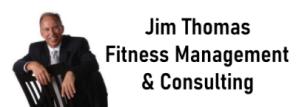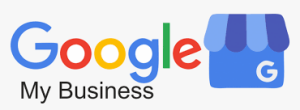Getting a business loan can be tough. You need collateral to secure the loan and if you’re just starting out or a small business owner that hasn’t accrued collateral yet, this can be an issue. Assets that can be used as collateral buildings, equipment, vehicles, or even accounts receivable. If you aren’t able to pay back your loan, these assets may be seized and used to subsidize the loan.
Not having collateral doesn’t mean your business is out of the game though! Keeping your business on the move with an SBA loan is feasible if you know about the four ways to receive a business loan without collateral.
Small Business Administrations Loans
Administered by the Small Business Administration (SBA) and designed to help business owners in need of working capital, SBA loans are generated by a network of traditional lenders and guaranteed by federal programs.
Small business loan requirements and loan terms will vary depending on the lender and conditions. For instance, SBA disaster loans that are over $25,000 will require collateral management. When applying for a business loan to buy equipment, borrowers may require a loan percentage as a down payment.
You can turn to an online option for a Small Business Loan, as their standards for issuing loans can be more flexible. When looking for a lender online, finding the most financially beneficial option can be appealing but always research carefully, terms can sometimes be unclear.
Unsecured Business Line of Credit
A Business Line of Credit provides your business with cash upfront, giving you a one-time lump sum that allows you to withdraw funds as needed. You are able to repay and continue to borrow as long as you make payments on time and/or don’t exceed the limit.
Uncollateralized lines of credit are smaller than a business loan, whereas larger lines may require collateral. These revolving business lines of credit are subject to regular review and annual renewals and can have withdrawal limits.
Unsecured lines of credit offer varying interest rates for sums as low as $1,000 and as high as $100,000. For larger amounts, lenders will ask you to secure the loan with a certificate of deposit or a blanket lien on business assets.
One of the biggest benefits of this option is the opportunity to build your credit history. As long as payments are made on time, not only can you improve your credit but you may also help your business secure additional financing in the future.
These financial instruments give business owners access to short-term financing. They’re ideal for operational expenses, payroll, or managing inventory. Cyclical companies use unsecured lines of business as a source of off-season working capital.
Merchant Cash Advance
A merchant cash advance is an upfront cash amount determined by the lender and based on the business’ merchant account credit sales. This solution is an enticing option because of the fast setup and completion of the process. Businesses can expect distributed funds within 24 hours of approval.
Lenders in this venue look at risk and creditworthiness, unlike conventional lenders. Merchant cash advance providers review credit card history to determine if a business has the ability to repay their loan.
Rates may be higher, but many businesses are willing to forego this as quick funds mean fast cash and a chance to manage operational expenses that need immediate attention.
Consider overall total cost over overall time. This should not only include rates, but processing rates, account fees, chargebacks, and any potential fees associated with maintaining the merchant account. Also, take a close look at the terms and conditions; not looking below the surface can be an expensive mistake.
It’s critical that you have a good understanding of the terms of a merchant cash advance, which is essentially a short-term solution. Always make sure to compare rates. That isn’t to say that lower rates make one company better than the other, It’s more about insight for making educated decisions about a merchant cash advance. Connect with the lender and get a feel for the relationship that will benefit your business.
Accounts Receivable Financing
This option enables companies to receive early payments on outstanding invoices. Lenders use the anticipated income of the business to advance funds for a fee. There are three primary types of account receivable financing:
- Asset-based: An on-balance sheet approach with hefty fees. You make a large commitment of receivables and have limited flexibility as to which gets committed.
- Traditional factoring: A company sells its accounts receivables minus processing fees. Factored receivables go on the books as outstanding debt.
- Selective receivables financing: Lets businesses pick which receivables to put forward. Rates may be lower and, based on the program structure, may not be categorized as debt.
Benefits of accounts receivable financing include quicker cash flow and no secure collateral management. You get access to funds when you need them most by converting pending payments into cash right away! You may also enhance creditworthiness through a financial instrument that builds your reputation. Best of all, you can focus on operations instead of worrying about how you will pay for operations.
How to Get a Small Business Loan
Obtaining a small business loan without collateral requires some due diligence. Here are a few things you can do to increase your chances.
- Get Your Credit Score in Shape
If you lack collateral, the only thing you have to offer is your reputation, which is essentially your credit. One way to raise your score is to lower your credit utilization ratio; which is one of the only ways to get a small business loan with bad credit.
- Determine Cash Flow Projections
It’s important to know you can repay the debt and how. Otherwise, you will have trouble convincing lenders you will be able to repay your loan.
- Have a Business Plan for a Small Business Startup Loan
Drafting a solid business plan is more of a reference for yourself. Bank lenders may ask for one, non-bank lenders often won’t. But you’ll have a foundation of growth strategy, purpose, profit and loss, etc., this is all helpful information that enables better financial business decisions.
- Research Financing Sources
Again, know who you’re planning on doing business with. You need a resource that doesn’t require collateral but doesn’t ask for the world with high rates or stringent terms and conditions. Find out who qualifies for a small business loan with each institution, so you can focus your efforts on the ones that may be likely to approve you.
- How to Apply for a Small Business Loan
Once you have everything you need to qualify for a small business loan, go find the lending option that secures your financial future. There are many lending options ready to put you on the right track. One of our advisors can assist you in identifying the best option for you. Just complete our application form and one of them will contact you.
Click here for more details or call 214-629-7223 or email jthomas@fmconsulting.net for more information. Or, apply now.
An Outsourced CEO and expert witness, Jim Thomas is the founder and president of Fitness Management USA Inc., a management consulting, turnaround and brokerage firm specializing in the gym and sports industry. With more than 25 years of experience owning, operating and managing clubs of all sizes, Thomas lectures and delivers seminars, webinars and workshops across the globe on the practical skills required to successfully overcome obscurity, improve sales, build teamwork and market fitness programs and products. Visit his Web site at: www.fmconsulting.net or www.youtube.com/gymconsultant.






